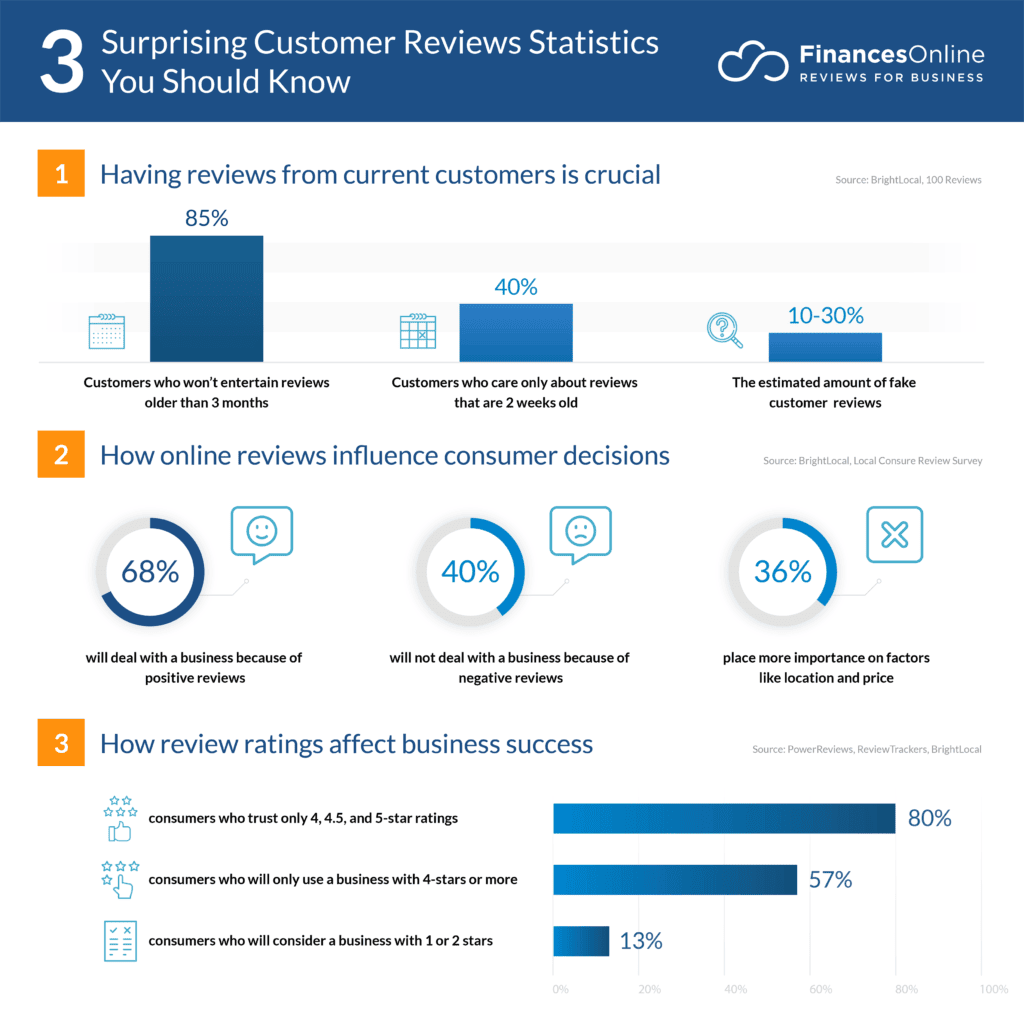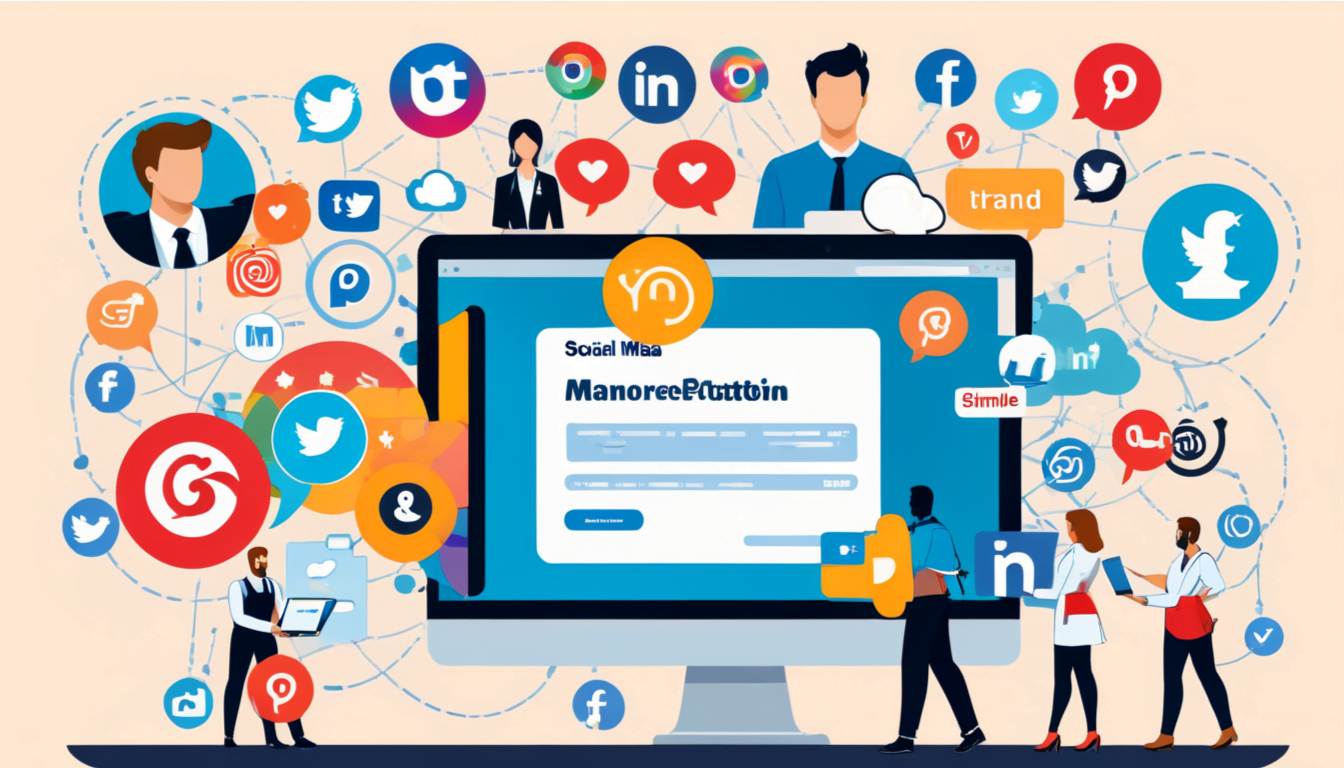Social media doesn’t forget.
As an eCommerce brand, your social media presence is more than a platform to promote your products and services.
It is also a platform for you to manage your narrative, listen to your customers, and engage with your audience beyond the business transaction.
To do so, you need to have strong presence and reputation on social media for ecommerce.
What is Social Media Reputation Management For Ecommerce?
Online Reputation Management involves monitoring how a brand is perceived on the social platform, managing any negative sentiments, and promoting a positive brand image overall.
Online social media reputation activities include responding to bad reviews, mitigating risks for negative publicity, monitoring brand mentions, and implementing crisis management tactics, and correcting misinformation about your online store.
Social media is a platform where anyone can post or voice their opinions. A minor inconvenience can cause dissatisfied customers to simply go on platforms and narrate any negative experiences with your brand.
A delayed delivery or a small disagreement with the support team can cause more harm to your brand in terms of lost customers and revenue.
While virality can work wonders for your brand if it is positive, you don’t want your brand to be a part of a post or video that negatively portrays your brand. This is where social media reputation management intervenes.
Why do you Need Social Media Reputation Management?
Risk Mitigation
Social Media reputation management allows you to be proactive and look for signs of negative publicity before a situation blows up on social media and damages your brand reputation.
Since you’re monitoring your mentions, you are familiar with the narrative relating to your brand. It helps you to detect potential issues or negative sentiments early on easily. You are preventing a situation from escalating that can cause irreversible damage.
Deal with Negative Publicity
If you want your online store to reach new levels of popularity, you need to be prepared for negative reviews and publicity. For instance, if you have not implemented any mechanisms for bug management, chances are that customers might post negative reviews about their experience with these bugs on your website. Consider them inevitable as the larger the customer base, the higher the chances of disappointing them and getting more customer complaints.
When customers take public platforms to address their complaints, reputation management tools such as SocialPilot Reviews, Birdeye, etc. allow you to quickly address them and retain them before the issue gets out of hand.
Generate Valuable Feedback
If you see a bunch of customers complaining about specific issues in particular, it means you need to re-evaluate your operations. Suppose you’re seeing repetitive comments on social media about a particular aspect of your brand like poor delivery service or website performance issues.
In that case, you know what the next course of action you need to take. You can gather other useful insights on your products, services, or overall customer experience by acting on customer feedback on social media.
Impact Purchase Decisions
95% of customers go online to learn about a business before considering a purchase. If what they see and hear isn’t positive, chances are they will conclude their research and assume that your brand is not worth a purchase.
You can eventually lose customers based on brand perception online. If you have a reputation management system in place, you can act quickly and convert lost prospects.
How to Manage Online Reputation on Social Media?
Monitor Brand Mentions
Monitoring your brand mentions is at the heart of your overall social media reputation management strategy. Brand monitoring tools give you social media intelligence insights into the conversations around your brand.
They track all the posts and conversations that include the mention of your products, leaders, brand name, etc.
Without the tool, you can only check the mentions where the user has tagged your brand account. But you won’t be able to check the untagged mentions and hashtags which are crucial if you want an overall narrative around your brand.
Using brand monitoring tools can give you comprehensive insights into your brand perspective on social media platforms.
It automatically collects mentions from not just mainstream social platforms but also news sites, blogs, and discussion groups. It shows you what people are talking about and how customers are interacting with your brand.
Another appealing feature of these tools is that they give you a sentiment analysis of your brand mentions. Sentiment analysis goes beyond mentions and tells you whether the mention is positive or negative.
It takes its cues from user language to gauge the nature of the comment or mention. Knowing these mentions, you can quickly respond to the negative comments and ensure that you still get to control your narrative and manage your reputation online.
Listen to Keyword and Topic Mentions
Apart from your brand mentions, you need to stay on top of the topics within your industry as well. For example, what are the competitors currently offering and launching? How is your offering making headlines? What do the customers like to read about your brand?
This helps you be proactive and address customer pain points before they even realize it. For example, say you’re an online jewelry brand and a competitor has launched exclusive bridal jewelry.
Check for the type of conversations that are happening around the brand and product. What are the customers liking about the new launch and what are their primary concerns? Keyword and topic mentions help you get a sneak peek at customer journeys on social media and create a responsive strategy for your brand online.
You cannot monitor topic mentions with a brand mention tool alone. You can leverage social listening tools that help you uncover trends. It also provides you with actionable insights from the data it collects.
Prioritize Tasks
Not every mention or topic deserves your attention. At least not urgently. You need to prioritize tasks based on their business impact and understand which reputation management tactics to employ and which mentions you should respond to first.
It will help you manage your reputation better and focus on queries and mentions that need immediate attention and those that just need acknowledgment. Categorize these mentions into four categories:
Quick wins: These are those mentions that have a high business impact and are also easy to accomplish. For example, let’s say a user has written a detailed review about your products, service, quality, etc. These types of reviews can bring in more customers and if they’re negative, all you need to do is respond to them and clear their issues.
Big Bets: These types of reviews or comments are also those that have a high impact on the business but they also need some effort from your end to manage it. For example, say you have a new video that has gone viral and it portrays your brand negatively. It is difficult to address and stop its circulation but it also has a high business impact.
Fill-ins: They are simple tasks that you do to improve your brand reputation but have a low business impact.
Thankless tasks: They are tasks that take a lot of effort and have a low business impact.
Encourage Brand Reviews
No business wants customers to share negative reviews on social media. But having some reviews is better than having none at all. So encourage customers to leave reviews.
Because you want to create a brand image of being responsive. You won’t have comments to reply to and increase engagement if there are no comments in the first place.
Besides, if you receive good online reviews, they work as a source of word-of-mouth marketing. Almost half of your prospects won’t go through with the purchase if they don’t see reviews for your product.

Facilitate user reviews and encourage users to leave reviews after every purchase on sites, Google, and social media. If you don’t have enough reviews, you can send emails and SMS or even provide special benefits in exchange for a genuine review.
Respond to every review you get so that every customer can see that their opinion matters. If in case you come across a detailed negative review, ask them to contact you directly before the issue escalates. But don’t discourage reviews.
They are also a great reflection of your brand and user experience. You get to know what are the top grievances that customers have and what can you do to address them.
For example, if you see so many comments and reviews about poor site performance, you can implement an eCommerce monitoring platform to improve it, if there are too many complaints about slow response from customer support, you can consider automating customer support to an extent, etc.
Be Proactive
You don’t have to wait for customers to post something for you to manage your reputation. You need to start building your narrative right from the start. One way to do that is to publish regularly on social media and show what your online store is all about. What is the story or the social message it is trying to tell?
For example, you have many online brands selling plus-size clothing where the narrative is about body positivity and saying goodbye to toxic beauty standards.
Online reputation management is a long-term strategy. It doesn’t just come into the picture when you have a crisis or a bad review. Pick something that your brand will ace and simply focus on that. Your pre-built presence can help you remind customers about where your focus is and what expectations they can keep.
Set up Alerts
Setting up alerts in your brand monitoring tools and Google alerts is a simple but effective way to stay ahead of any potential issues that may pop up on social media.
You can set up alerts on your brand name, key products, and high-profile executives and employees who influence buying decisions. It will keep you in the circulation of what users are talking about and the top times your brand is in conversation.
You can set up Google alerts by visiting google.com/alerts. Enter your industry and product names to get alerts.
For example, if you’re an instant flower delivery platform, you can add your brand name, and trending local keywords like “instant flower delivery” or “fresh flower shop,” etc. You can customize the frequency of these alerts in the settings along with selecting language, region, and other sources.
Choose a Reputation Management Tool
You cannot possibly manage your reputation online manually. You need a social media reputation management tool that helps you monitor your brand online, sets up alerts for your brand mentions by tracking keywords and hashtags, conducts brand sentiment analysis, and so on.
Do thorough research about the kind of tool you want to employ for managing your online reputation. Does it align with your goals? Can you afford the costs? Does it have a multi-platform reputation management service?
An automation tool for social media can have all the features one can ask for but maybe your brand doesn’t need it considering the small scale at which it operates. It may also not fit in terms of costs and ROI. Finding a balance between what you need and what the tool offers is crucial to get maximum results.
Establish Guidelines for Crisis Management
Social media reputation management involves action as much as prevention. What happens if your brand is under negative scrutiny? What plans do you have to handle the backlash? How can you sensitively tackle the negative perceptions?
By having clear guidelines for crisis management.
This strategy should outline the internal and external communication plan, the team members who will handle the public responses, and how to handle the social media mentions.
It also outlines the tone that the brand will adopt, the spokesperson who will be responsible for the communication, and how the brand will stay consistent across its response. This lets you be prepared in case something goes wrong and your online store receives a backlash.
Wrapping Up Reputation on Social Media for Ecommerce
Customers are extensively interacting with brands on social media and other digital channels, calling for an urgent need for online reputation management.
Social media reputation management helps you have a precise strategy for your brand communication and also a crisis management strategy in case a brand is put in that situation.
If you don’t have a strategy currently, it’s never too late to start. Hire the right people for the job, start building a positive presence, and adopt social media management tools that help you monitor your brand and gauge customer sentiment.
Proactive reputation management helps you build credibility and trust and understand customer experiences so that you can better address their needs.
With a solid social media reputation management strategy in place, your brand can leverage customer engagement for improvement and build a positive narrative about your brand.




